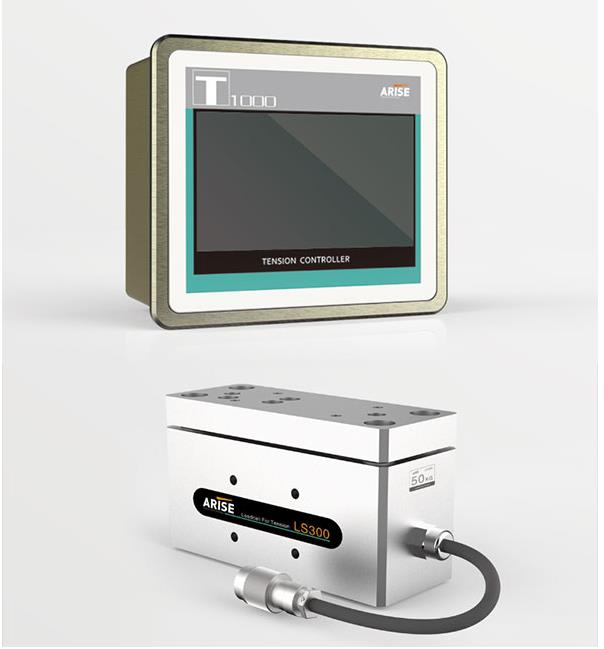Why Energy-Efficient Tension Control Solutions are Important
Optimizing energy consumption stands as a cornerstone for sustainability and cost-effectiveness across various manufacturing operations. Among these, tension control emerges as a critical factor in industries such as web handling, printing, packaging, and textiles. Exact tension levels are pivotal for product quality and operational efficiency. Yet, traditional tension control mechanisms often incur significant energy costs. To address this challenge, industries are increasingly adopting energy-efficient tension control solutions.

Benefits of Energy-Efficient Tension Control Solutions:
Cost Savings:
Energy-efficient tension control solutions drastically reduce energy consumption, leading to lower utility bills and operating costs. Businesses can enhance their bottom line by optimizing energy usage and utilizing resources more efficiently.
Environmental Sustainability:
Energy efficiency directly contributes to environmental sustainability by reducing carbon footprint. Lower energy consumption helps mitigate climate change, showcasing a commitment to environmental responsibility and corporate citizenship.
Compliance with Regulations:
Many regions impose strict regulations regarding energy usage and environmental impact. Adopting energy-efficient technologies ensures compliance with these regulations, averting potential penalties or fines. Moreover, it enhances brand reputation and market competitiveness by demonstrating adherence to sustainability initiatives.
Enhanced Equipment Performance:
Energy-efficient tension control solutions integrate advanced technologies and intelligent algorithms to optimize system performance. By maintaining precise tension levels and minimizing energy waste, these solutions enhance equipment reliability, longevity, and overall operational efficiency.
Improved Product Quality:
Precise tension control is paramount for product quality and integrity, particularly in industries like printing, packaging, and textiles. Energy-efficient tension control solutions ensure uniform tension levels, reducing the risk of product defects, waste, and rework, thereby enhancing customer satisfaction and brand reputation.
Flexibility and Adaptability:
Energy-efficient tension control solutions are designed to be versatile and adaptable to varying production requirements and process conditions. They offer flexibility and customization options to meet specific operational needs, whether adjusting tension levels for different materials, speeds, or environmental factors.
Future-Proofing Investments:
Investing in energy-efficient solutions not only yields immediate cost savings but also shields businesses from escalating energy bills and evolving regulatory requirements. Prioritizing energy efficiency secures the durability and sustainability of operations amid changing market circumstances.

Innovative Approaches in Energy-Efficient Tension Control Solutions:
Regenerative Braking Systems:
Regenerative braking systems capture and store excess kinetic energy generated during braking for later utilization. By converting this energy into electrical energy, these systems reduce energy consumption and manage peak power demands efficiently.
Intelligent Control Algorithms:
Intelligent tension control algorithms monitor and adjust tension levels in real-time based on variables like material type, speed, and environmental conditions. These algorithms optimize tension control parameters, minimizing energy waste while maintaining optimal tension levels.
Low-Friction Components:
Utilizing low-friction materials, coatings, and design optimizations within tension control components reduces frictional losses and energy requirements. This minimizes resistance and enhances material movement smoothness, contributing to energy efficiency and equipment lifespan extension.
Variable Frequency Drives (VFDs):
VFDs enable precise adjustment of motor speeds based on process requirements, resulting in energy savings. By matching motor speed to required tension levels, VFDs eliminate energy wastage associated with constant-speed operation and reduce mechanical stress on equipment.
Predictive Maintenance and Condition Monitoring:
Predictive maintenance techniques and condition monitoring systems identify potential issues before they escalate into costly failures. Regular monitoring and analysis of tension control equipment condition optimize system efficiency, preventing energy losses due to unexpected downtime or malfunctions.
System Integration and Optimization:
Integrating tension controllers with broader energy management platforms enables comprehensive optimization of energy usage across manufacturing processes. This holistic approach synchronizes tension control operations with other energy-intensive equipment and processes, maximizing energy efficiency and overall productivity.
Conclusion:
Energy-efficient tension control solutions offer enterprises an opportunity to enhance operations while reducing environmental impact. By leveraging innovative technology, intelligent algorithms, and integrated energy management systems, businesses can achieve significant energy savings, improving productivity and sustainability simultaneously.
- Art
- Causes
- Crafts
- Dance
- Drinks
- Film
- Fitness
- Food
- Игры
- Gardening
- Health
- Главная
- Literature
- Music
- Networking
- Другое
- Party
- Religion
- Shopping
- Sports
- Theater
- Wellness


